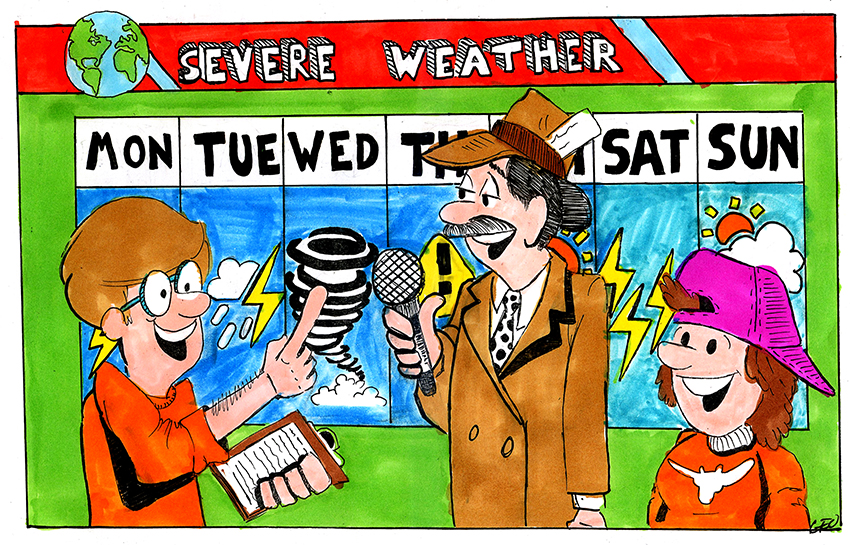As part of its larger weather safety initiatives, the University is hosting a Basic SkyWarn Severe Weather Recognition and Safety training session on campus next Thursday for members of the UT community. The National Weather Service, a federal agency under the Department of Commerce, is tasked with protecting life and property in the event of severe weather. The NWS has 122 field offices nationwide and utilizes Doppler radars to keep track of local weather patterns.
“We need help during weather events, and the help comes in the form of weather reports,” said Paul Yura, warning coordination meteorologist for the NWS in Austin and San Antonio. “As far as what size hail is falling or tornadoes that are on the ground, those things have to come from eyewitness reports.”
To close this gap, the NWS established the SkyWarn program in the late 1960s. SkyWarn is a volunteer program with 290,000 severe weather spotters who are trained to recognize severe weather in their counties and report it to the NWS, using specific hashtags and phone numbers. The NWS then sends out weather watches, advisories and warnings to local media outlets.
Next week, the Office of Campus Safety and Security will be hosting University Incident Meteorologist Troy Kimmel, members of the University emergency management team and Yura for an on-campus SkyWarn training. During the training, UT affiliates will learn severe weather spotting techniques, such as recognizing storm clouds, estimating wind speeds and knowing the difference between a weather watch, advisory and warning.
At UT, Kimmel posts daily weather forecasts, sends severe weather email alerts to the UT community and works closely with Campus Safety and Security to develop severe weather incident plans. Kimmel said knowing basic weather terminology is an important component of campus safety.
“What happens if I send an email out or our social media folks send out a tweet or something on a severe thunderstorm warning?” Kimmel said. “You don’t need to be learning (what it means) then, you want to know what it means so when you see it come up on social media or in an email, you’re able to make a smart decision about how to protect yourself.”
The most common weather concerns on campus are thunderstorms, lightning and flash flooding, all of which students and faculty often don’t fully understand the dangers of, Kimmel said.
“I’ve never been concerned personally during thunderstorms, because we’re on campus — the buildings could withstand any rain we’d see in Austin,” said Kristina Alli, radio-television-film and sociology senior. “But it’s still important to know what to do, especially during things like tornado warnings, which aren’t out of the question being in Central Texas.”
While the NWS offers a citywide SkyWarn training class once per year, this is the first time the course is being offered exclusively for the campus community.
“It’s very easy a lot of times for people to say ‘Oh that’ll never happen to us on this campus,’” Kimmel said. “But from a safety and security standpoint, we aren’t willing to bet your life on it.”
The SkyWarn training is open to all UT students, faculty and staff and will take place next Thursday from 4:00 to 5:30 p.m. at the University Teaching Center. To attend, email RSVP Kimmel by this Friday.





















